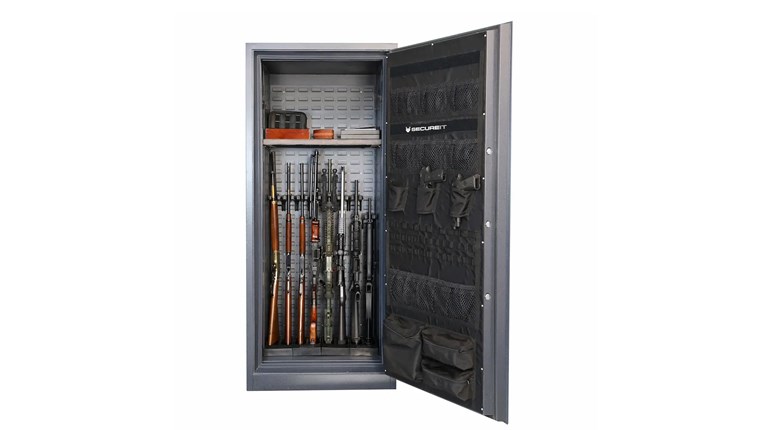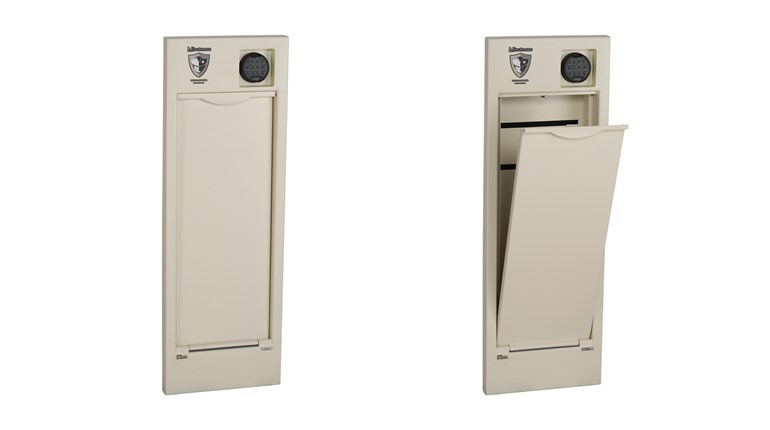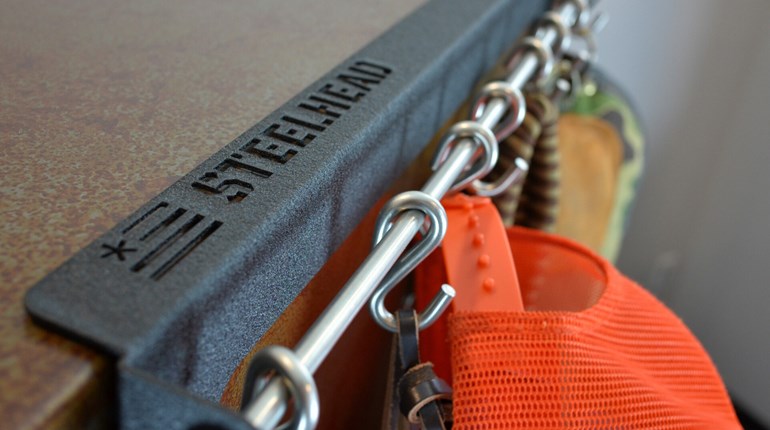
Whether for added security at home, on the road or in your luggage, a small handgun safe is a wise investment…if you know what to look for.
At the family farm, Grandpa always had his pistol close by. That Smith & Wesson Model 10 hung on a nail in the cabin protruding from a floor joist over grandma and grandpa’s bed. Any of us kids could have stood on the bed and reached the pistol, but we didn’t. We knew better, and nothing was worth the whoopin’ we’d get if grandpa found out.
There was another reason we didn’t bother grandpa’s pistol. Anytime we’d ask—if he wasn’t busy—grandpa would let us handle or even shoot his revolver. This took the mystery out of the equation, and I carry on that tradition with my children. But, I don’t leave pistols hanging around the house on nails. If it’s not on my person, it’s generally in a safe. This is not a matter of trust; it’s common sense.
The affordability of compact handgun safes has negated the old ways of storing a gun. There is no longer a good reason to hide a pistol in a closet, dresser drawer or under the mattress. Some handgun safes cost less than $30 and are infinitely more secure than drawers or a nail and the threat of a whoopin’. Some are small enough, they not only provide security, but are also very concealable and portable. Access to these safes can be with a key, a secret code and even your fingerprint.
Interested in knowing more about them, I asked every manufacturer I could find to send samples for testing. Four agreed to participate: GunVault, Secure-It, Stack-On and V-Line. I’ve had the test safes for more than six months, and during that time I’ve used each model on a daily basis for several weeks to get a feel for them. When this process was complete, I gave my 11-year old son a hammer, a flat-tip screwdriver and 2 minutes to try to break into some of the safes.
After all, if you’re considering a handgun safe, you should be curious about the level of security they provide, how easy they are to access, how versatile the safe is with regard to where it can be used and, of course, price. Let’s address the question of security first. My son broke into the first safe he tried to open.It took him about 90 seconds to breach one of the very compact, key-lock safes. He tried the same approach on a biometric safe, but after 2 minutes was unsuccessful. Then, he got out the hammer. After that, he was four-for-four on gaining unauthorized access.
The lesson learned here should be all of these handgun safes are more of a barrier to a handgun as opposed to absolute security. That does not mean they are worthless or cannot be trusted under certain circumstances. However, it would be a mistake to assume a handgun in any of these safes cannot be stolen or improperly accessed by another human. That being said, I currently use versions of three of these safes in my home, one in my vehicle and my wife’s and another when I travel by plane.
The smallest, book-style safes from Secure-It and Stack-On seem well suited to airline travel. I won’t get into TSA regulations or the rules of various airlines, but let me say this: I fly from home on United, and when doing so I can lock up a handgun in one of these small, lightweight safes and drop it in my checked baggage. I’ve never had a problem at any airport when using this method. Most of these safes also come with a cable that allows you to secure it to something in a motel room or wherever you are staying. But, this type of safe was the easiest to breach.
There were two types of coded safes tested—models that have a series of mechanical or electrical buttons that must be pushed in a certain sequence to gain access. All of these safes provided flawless operation, if you entered the correct code. The electrical safes are battery powered and battery failure can be a concern. Some have an audible alarm indicating a low battery, but all the electric-lock safes can also be opened with a key.
Mechanical safes have the advantage of working without electricity. If you’re storing a handgun for an extended period or only plan to access it in case of an emergency, the mechanical option has merit. Regardless, it is critical to remember your code with either the electric- or mechanical-lock safes. You do have the key backup with the electrical safes, but not for the mechanical models. Write your code down and remember where you put it.
Some of the safes come with mounting screws and hardware. This allows them to be attached to something, like under a table, desk or even to the floor. Break-in was not attempted with any of these safes while mounted—had they been, it may have made access more difficult. Mounting these safes would also make it exceedingly more difficult for a burglar to just carry your safe away. Unlike the cables that come with some of the smaller safes, which could be defeated with a pair of side-cutters, these mounted safes are a much better option for theft protection.
Finally, there are the biometric-lock safes. These models use technology that memorizes and reads your fingerprint. They are obviously electrically powered and do not require you to memorize a code. They must, however, be operated consistently. You have to place and pull your finger over the same spot every time, exactly the same way, or you will not be able to gain access. This takes practice, and after weeks of use, it still sometimes required several attempts for me to gain access to the biometric units. If you get frustrated, all the biometric safes do have a backup key lock.
Safe Advice
Based on what I’ve learned working with these 10 safes over the last several months, I believe they are all useful in certain circumstances. Here are 10 suggestions for general use:
• Mount safes intended to be stationary to the floor or heavy furniture.
• Memorize any codes, write them down and keep them with the key.
• If you use multiple safes, use models with the same locking mechanism and set all codes the same.
• Periodically check safes with electronic locks to verify battery power.
• Work with biometric-lock safes on a day-to-day basis to ensure competency opening them.
• Small, key-lock, book-style safes are best used for complying with regulations, not preventing access.
• Select a safe based on how it opens and where you want to place it.
• For long-term storage, consider mechanical- and key-lock safes, or at a minimum, long-life batteries.
• Select a safe at least large enough for your handgun, spare ammo anda flashlight.
• You get what you pay for—select the most expensive safe that meets your needs.






































